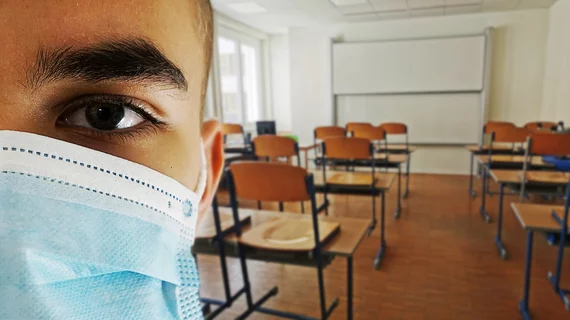COVID restrictions left many rad tech students 'very unprepared' for workforce
The COVID-19 pandemic may have left many radiologic technologist students unprepared for real-world clinical scenarios, according to new survey data.
When COVID began to widely circulate globally in 2020, medical organizations implemented several mitigation tactics to limit the spread of the virus, including placing stringent restrictions on patient appointments and regulating who was allowed inside hospitals and clinics. This didn’t just negatively affect patients, it also put the brakes on students completing clinical rotations in preparation to enter the healthcare workforce, radiologic technologists included.
Now, new survey data detail just how much of a setback the pandemic was for techs who had limited clinical exposure to patients during the height of COVID.
“There exists a paucity of research exploring how these changes have affected the performance of students within the clinical environment and entering the workforce,” Adam Steward, from Western Health in Footscray, Australia, and colleagues note. “This challenge of students, now in the workplace following pandemic impacted years of study, is currently being felt.”
For the analysis, the authors distributed a 44-question survey to a group of radiation science educators who manage clinical rotations and student placements. Survey questions focused on four different aspects related to the impact of COVID on clinical training for students, including student placement, preparedness for practice, performance and student well-being.
In total, 55 respondents completed the survey. Responses detailed significant disruptions in clinical placements and practice gaps. There was a general consensus among the group (74%) that many students were heading into clinical practice “unprepared” and that some would likely “require supportive periods upon entry into the profession” for at least 6 to 12 months due to missing out on patient care opportunities and exposure to different clinical experiences and competencies. Two-thirds of the respondents described the amount of hands-on clinical opportunities for students during the height of the pandemic as inadequate, with one-third suggesting that these opportunities remained limited even after some of the most impactful restrictions lifted.
The responses also detailed obvious gaps between theory and practice—gaps that virtual and simulated training could not fill. What’s more, some of the answers suggested that clinical sites were “failing to fail” students whose learning may have been impaired during this time.
Though the acute impact of COVID is now well in the rearview, these findings indicate that addressing the effect of techs’ missed opportunities during their training may be a yearslong effort.
“While many pandemic-forced changes have long since passed, a small generation of newly graduated [medical radiation sciences] professionals may be impacted for some time,” the group notes. “A focus for this generation of professionals towards continuing professional development would seem vital as would careful reflection and/or evaluation of knowledge and skills.”
More insight from the survey can be found in the Journal of Medical Radiation Sciences.

